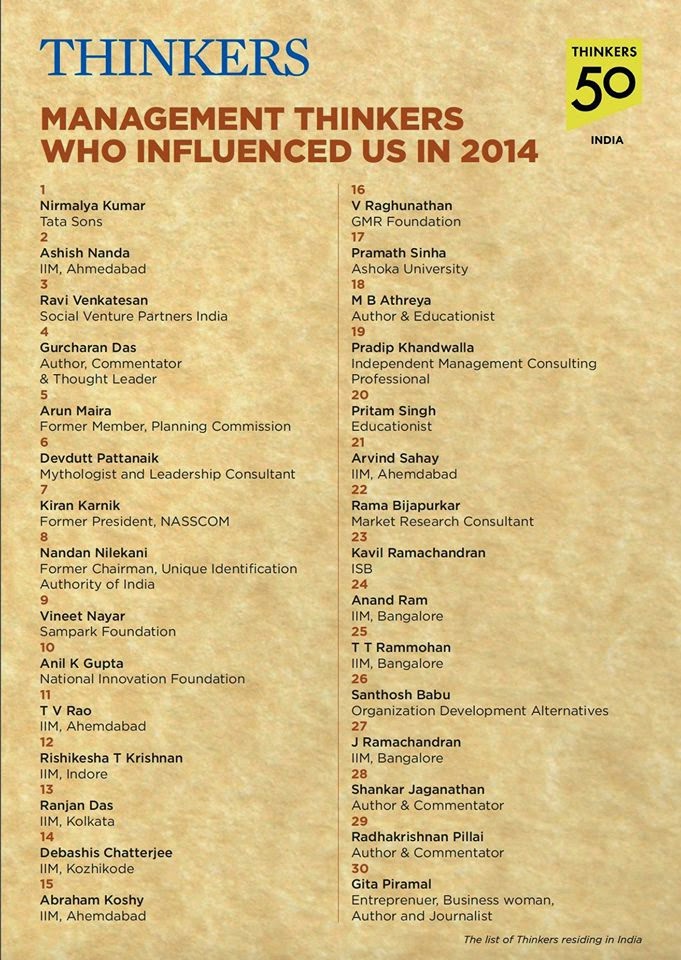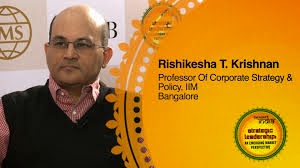India faces the challenge of enhancing its research capabilities, and improving the quality of research from the twin perspectives of rigour and impact. This challenge is particularly acute in areas like energy, water, and information technology that are key to India’s development and future growth. Our policy makers have several proposals to make this happen – sector-specific research programmes; setting up new IITs, IISERs and universities; grants to create research infrastructure in existing institutions; and international cooperation agreements with leading industrialized countries and their institutions.
One exciting programme that has the potential to be a trailblazer in enhancing research capabilities and output is the IITB Monash Research Academy (IITBMRA), a joint venture between the Indian Institute of Technology Bombay (IITB) and Monash University (Australia). http://www.iitbmonash.org/
Monash University is one of Australia’s leading universities, with strong expertise in engineering and technology. Like many other universities across the world, about five years ago Monash identified India as an important country to engage with. But while most other universities have preferred to target India’s large demand for undergraduate education, Monash has chosen a more challenging yet potentially rewarding track – concentrating on advanced students at the PhD level.
To do this, Monash has formed the IITB Monash Research Academy with one of India’s leading engineering and technology institutions, the Indian Institute of Technology Bombay (IITB). The IITBMRA has several distinctive features:
Students admitted to this programme get a chance to do part of their work at Monash with all expenses paid. They also get a higher scholarship than the typical IIT PhD scholarship.
The programme hopes to have 350 PhD scholars by 2015. Over time, it will also build stronger links with industry and establish long-term research programmes with industry. The benefits for India are clear – a large cohort of well-trained researchers; better designed doctoral research projects; and, creation of the ability to take on larger, long-term, impactful research programmes. This could be a useful model to help take the IITs, which have so far been better known for their undergraduate teaching programmes, into the orbit of the leading research institutions of the world.
While Monash University deserves credit for piloting such an innovative arrangement, IIT Bombay's leadership must be congratulated for taking an important step towards the building of long term research capabilities in the country.
One exciting programme that has the potential to be a trailblazer in enhancing research capabilities and output is the IITB Monash Research Academy (IITBMRA), a joint venture between the Indian Institute of Technology Bombay (IITB) and Monash University (Australia). http://www.iitbmonash.org/
Monash University is one of Australia’s leading universities, with strong expertise in engineering and technology. Like many other universities across the world, about five years ago Monash identified India as an important country to engage with. But while most other universities have preferred to target India’s large demand for undergraduate education, Monash has chosen a more challenging yet potentially rewarding track – concentrating on advanced students at the PhD level.
To do this, Monash has formed the IITB Monash Research Academy with one of India’s leading engineering and technology institutions, the Indian Institute of Technology Bombay (IITB). The IITBMRA has several distinctive features:
- It is a genuine joint venture agreement with strong participation from both Monash and IITB. The governing board has equal representation from both institutions.
- It has a stellar advisory council including eminent professionals like N R Naryana Murthy and Ramesh Mashelkar who are actively engaged in guiding the Academy.
- The IIBMRA has a board of industry partners who are potential sponsors and users of the research being done in the programme. These include some of Australia’s top companies. Indian companies are gradually signing up as well.
- The IITBMRA offers the opportunity to work on cutting edge problems under joint supervision of IITB and Monash faculty. The problems are in six themes of importance including clean energy, water, biotechnology and stem cell research, and advanced computational engineering.
- Specific research problems in these areas have already been identified. Students typically apply to work on these specific research problems. Many of the problems have a strong cross-disciplinary flavor. Pre-identification of problems should make the programme quicker to complete and also enhance impact.
Students admitted to this programme get a chance to do part of their work at Monash with all expenses paid. They also get a higher scholarship than the typical IIT PhD scholarship.
The programme hopes to have 350 PhD scholars by 2015. Over time, it will also build stronger links with industry and establish long-term research programmes with industry. The benefits for India are clear – a large cohort of well-trained researchers; better designed doctoral research projects; and, creation of the ability to take on larger, long-term, impactful research programmes. This could be a useful model to help take the IITs, which have so far been better known for their undergraduate teaching programmes, into the orbit of the leading research institutions of the world.
While Monash University deserves credit for piloting such an innovative arrangement, IIT Bombay's leadership must be congratulated for taking an important step towards the building of long term research capabilities in the country.















No comments:
Post a Comment